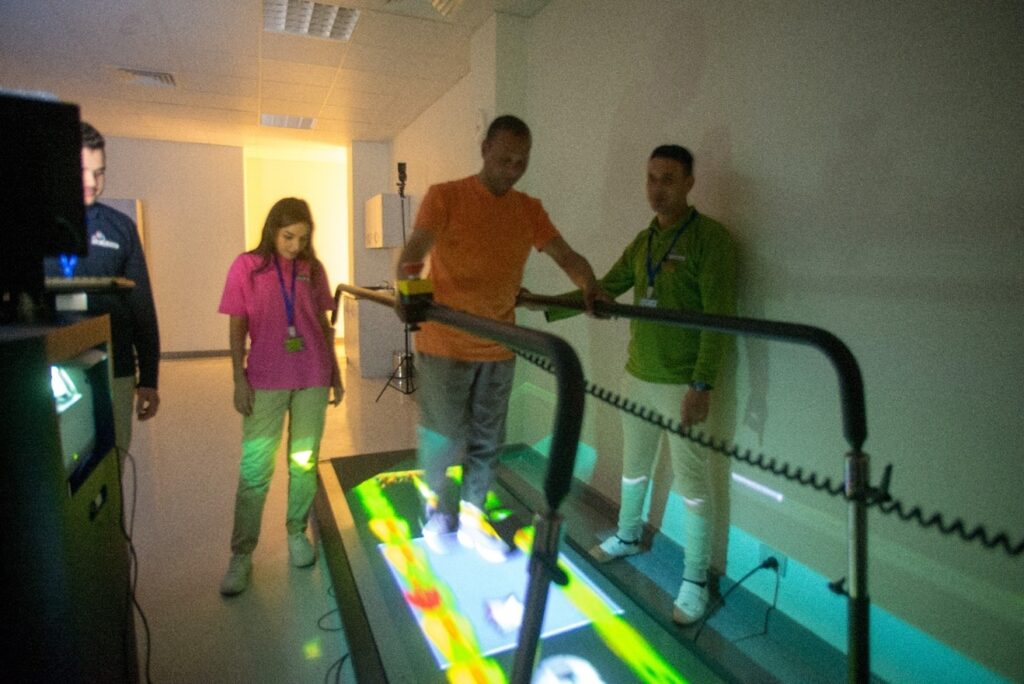Cognitive Rehabilition
Cognitive therapy, often referred to as cognitive behavioral therapy (CBT), is a type of psychotherapy that focuses on identifying and modifying dysfunctional thoughts, beliefs, and behaviors. It is based on the cognitive model, which suggests that thoughts influence feelings and behaviors. Cognitive therapy is used to treat a wide range of psychological issues, including depression, anxiety disorders, and stress-related conditions. Here’s a detailed look at cognitive therapy:
Key Concepts of Cognitive Therapy
1. Cognitive Model:
- Purpose: To understand how thoughts affect emotions and behaviors.
- Core Idea: Dysfunctional or irrational thoughts lead to negative emotions and maladaptive behaviors.
2. Automatic Thoughts:
- Purpose: To identify spontaneous, often subconscious thoughts that influence feelings and behaviors.
- Examples: Negative self-talk, catastrophizing, and overgeneralization.
3. Cognitive Distortions:
- Purpose: To recognize and challenge distorted thinking patterns.
- Examples: All-or-nothing thinking, mental filtering, and personalization.
4. Core Beliefs:
- Purpose: To uncover deeply held beliefs that shape one’s worldview.
- Examples: Beliefs about self-worth, competence, and control.
Goals of Cognitive Therapy
1. Identify Dysfunctional Thoughts:
- Purpose: To bring awareness to negative thinking patterns.
- Methods: Thought records, cognitive restructuring exercises.
2. Challenge and Modify Thoughts:
- Purpose: To replace irrational thoughts with more balanced, rational ones.
- Methods: Socratic questioning, evidence-based analysis.
3. Develop Coping Strategies:
- Purpose: To equip individuals with tools to manage stress and emotional distress.
- Methods: Relaxation techniques, problem-solving skills, mindfulness.
4. Change Maladaptive Behaviors:
- Purpose: To adopt healthier behaviors that align with positive thoughts and emotions.
- Methods: Behavioral experiments, activity scheduling, exposure therapy.
Techniques and Methods in Cognitive Therapy
1. Cognitive Restructuring:
- Purpose: To identify and challenge cognitive distortions and irrational beliefs.
- Method: Questioning the evidence for and against a thought, and considering alternative perspectives.
2. Behavioral Activation:
- Purpose: To engage in activities that improve mood and reduce avoidance behaviors.
- Method: Scheduling enjoyable and meaningful activities, even when not feeling motivated.
3. Thought Records:
- Purpose: To track and analyze thoughts, feelings, and behaviors.
- Method: Writing down situations, automatic thoughts, emotional reactions, and alternative thoughts.
4. Exposure Therapy:
- Purpose: To reduce fear and avoidance through gradual exposure to feared situations or stimuli.
- Method: Creating a hierarchy of feared situations and systematically confronting them.
5. Mindfulness and Relaxation Techniques:
- Purpose: To reduce stress and increase present-moment awareness.
- Method: Mindfulness meditation, deep breathing exercises, progressive muscle relaxation.
6. Problem-Solving Skills:
- Purpose: To enhance the ability to cope with challenging situations.
- Method: Defining problems, brainstorming solutions, evaluating options, and implementing solutions.
Conditions Treated with Cognitive Therapy
- Depression: Reducing negative thoughts and behaviors associated with depression.
- Anxiety Disorders: Addressing irrational fears and avoidance behaviors.
- Obsessive-Compulsive Disorder (OCD): Challenging obsessive thoughts and reducing compulsive behaviors.
- Post-Traumatic Stress Disorder (PTSD): Processing trauma and reducing symptoms.
- Eating Disorders: Modifying unhealthy thoughts related to body image and eating habits.
- Substance Use Disorders: Addressing thoughts and behaviors related to addiction.
- Bipolar Disorder: Managing mood swings and developing coping strategies.
Benefits of Cognitive Therapy
- Improved Emotional Regulation: Better management of emotions through understanding and modifying thoughts.
- Enhanced Problem-Solving Skills: Increased ability to handle stressful situations effectively.
- Reduction in Symptoms: Decrease in symptoms of depression, anxiety, and other mental health conditions.
- Improved Relationships: Enhanced communication and interpersonal skills.
- Greater Self-Awareness: Increased awareness of thought patterns and behaviors.
Example Cognitive Therapy Program
1. Initial Assessment:
- Purpose: To understand the client’s issues, history, and goals.
- Method: Clinical interviews, questionnaires, and psychometric tests.
2. Goal Setting:
- Purpose: To establish specific, measurable, achievable, relevant, and time-bound (SMART) goals.
- Method: Collaborative discussion between therapist and client.
3. Psychoeducation:
- Purpose: To educate the client about the cognitive model and their specific condition.
- Method: Providing information and resources on cognitive therapy principles.
4. Therapy Sessions:
- Purpose: To apply cognitive and behavioral techniques to address the client’s issues.
- Method: Weekly or biweekly sessions, involving thought records, cognitive restructuring, and behavioral experiments.
5. Homework Assignments:
- Purpose: To practice skills and techniques learned in therapy.
- Method: Assigning tasks such as keeping a thought diary, practicing relaxation techniques, or engaging in behavioral activation activities.
6. Progress Review and Adjustment:
- Purpose: To evaluate progress and make necessary adjustments to the treatment plan.
- Method: Regular review sessions, feedback from the client, and modifying goals and techniques as needed.




